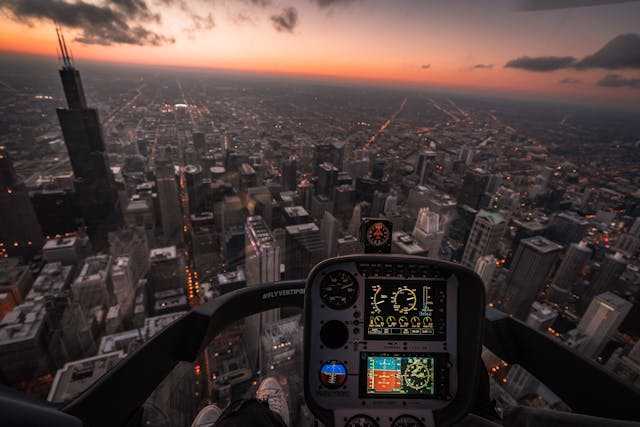Reach for the Sky: The Future of Aviation Tech

Photo from Pexels
Aviation technology is increasingly changing air travel, and you can expect better, greener, safer flights as well as smarter ones. Fresh developments are changing your path over the heavens, and this piece investigates five main developments in aviation technology. Every trend promises to improve your trip while creativity pushes the industry forward.
Sustainable Aviation Fuel Sources
Leading the drive for cleaner flights are sustainable aviation fuels (SAFs), which benefit you through fuels derived from renewable resources such as algae and agricultural waste. SAFs reduce the carbon footprint left by aviation travel while airlines use them to help meet environmental targets, resulting in better operations with less pollution. Major airlines are testing SAFs in their fleets, and you should anticipate more usage in the coming years while airports also adjust to handle these fuels. Infrastructure modifications guarantee seamless integration, and SAFs work with current aircraft, making acceptance simpler. Aviation equipment providers like Pilot John International are also changing ground support tools to fit new fuel criteria and environmental aims in support of this shift. This trend facilitates travel with less environmental impact, as sustainable fuels represent a step toward an environmentally friendly sky.
Electric and Hybrid Aircraft
Electric and hybrid aircraft are changing aviation as you will see aircraft running on batteries or hybrid systems that significantly reduce noise and pollutants. Short-haul flights mostly benefit from this technology, while businesses are creating models meant for commercial use, providing you with travel options that will be quieter and cleaner. Advanced batteries power electric aircraft, while hybrid systems run on conventional fuel mixed with electricity, providing flexibility for longer distances. Prototypes are under testing right now, and you could board one shortly for regional travel while airports are setting up charging facilities for these aircraft. Infrastructure improvements help enable this change, and electric aircraft fit well for urban air travel since they guarantee effective transportation in congested locations. This technology helps aviation design a sustainable future.
Autonomous Flight Systems
Autonomous flight systems are developing quickly, and you will travel on planes with less human intervention as these systems employ artificial intelligence to guide aircraft safely. They improve accuracy and lighten pilot workload while your benefits come from better efficiency and safety. Autonomous technology is already present in cargo drones, and future passenger flights might follow. At the same time, sensors and AI monitor real-time conditions, reducing risks during flights. At airports, you will also see more seamless procedures as ground systems turn to automation to handle tasks such as baggage handling, becoming independent. Regulations are changing to accommodate this technology, and you can rely on thorough testing to guarantee safety. Autonomous systems provide consistent and reasonably priced transport, making this development smarter flying.
Biometric Technology at Airport Systems
Biometric technology simplifies your trip through an airport as you check in using face recognition or fingerprint scans that expedite security procedures and boarding. Paper records are becoming less important, and your trip from curb to gate will go smoothly while airports extensively install biometric systems. These instantly and safely confirm your identity through face scans that compare you to a database, reducing waiting at checkpoints. Applications with biometric capability let you monitor bags while real-time information boosts your confidence about travel. Less chance of fraud helps improve security, and you will soon see these technologies at major airports since they simplify and speed up travel. Biometric technology improves your whole airport experience.
Artificial Intelligence in Operations
Artificial intelligence (AI) is transforming flying as you benefit from better flight scheduling and planning while AI studies data to optimize paths. This cuts delays and saves fuel, meaning you will experience more on-time flights, while predictive maintenance represents another AI benefit. It identifies problems before they start, guaranteeing better reliability and making flights safer while you will also see improved customer service. AI chatbots respond to your questions quickly and provide personalized travel updates while AI is also efficient in air traffic control, precisely managing the crowded sky. This should cause less travel disturbance as airlines include AI in daily operations, making your flying experience better generally. AI promotes a better and more seamless aviation sector.
Conclusion
Aviation technology is painting a brilliant future through eco-friendly fuels that reduce travel emissions and electric airplanes providing quiet, environmentally beneficial flights. Autonomous systems improve efficiency and security while biometric technology accelerates your airport travel, and AI streamlines travel-related activities. These patterns help you fly more comfortably, so accept the advances changing aviation.





